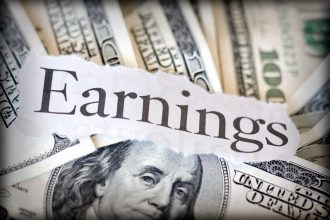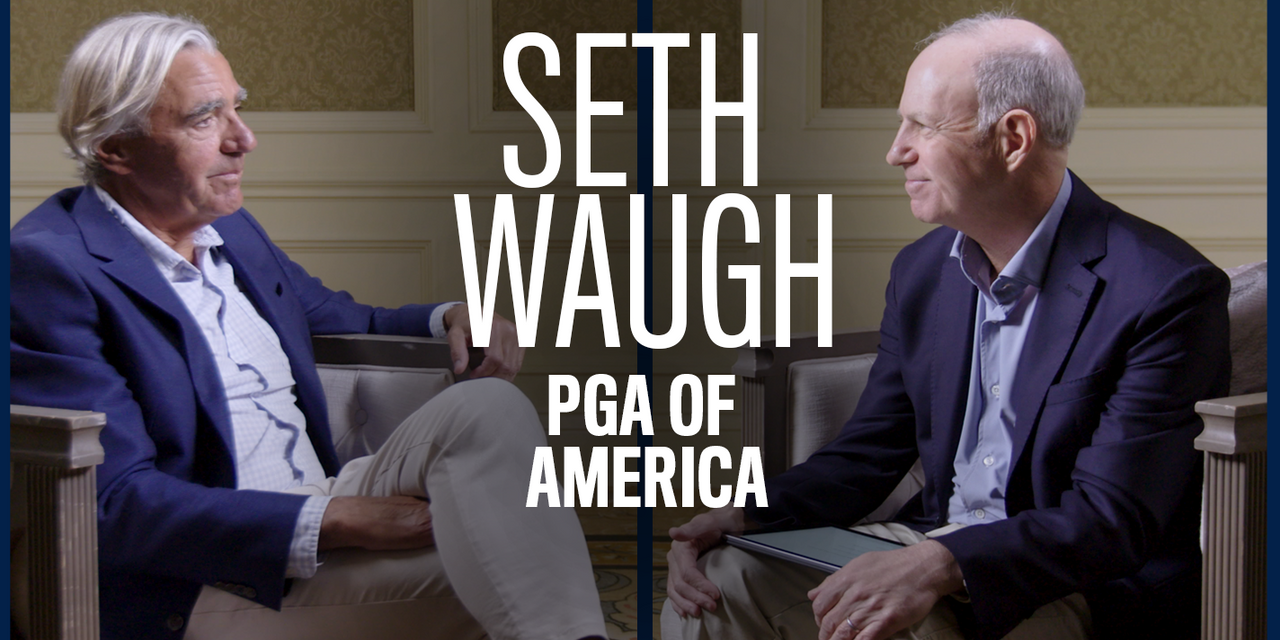Seth Waugh, CEO of the PGA of America, admits that for a while, golf had become a bit of a “sleepy” industry. But the past few years—and particularly the past few weeks—have turned that around.
The pandemic, among other factors, helped boost participation. New ways to play (think Topgolf and simulators) are becoming more popular as well. And then there was the sports world-shaking news in early May that the PGA Tour plans to merge with rival LIV Golf, the Saudi-backed project that the tour had previously treated as its mortal enemy.
In April, Barron’s Andy Serwer sat down with Waugh at the Sportico Bruin sports conference in Kiawah, South Carolina. They talked about the CEO’s Wall Street roots, how the golf is embracing technology, and, yes, Waugh’s views on LIV Golf. (After the PGA-LIV deal was announced, Barron’s reached out to see if Waugh would like to update his comments. He did not respond.)
The following is an edited version of their conversation.
Barron’s: So tell us about the difference between the PGA of America and the PGA Tour.
Waugh: The PGA Tour runs the events you see every week, it’s the tour players that play every week. PGA of America is the largest sports organization on Earth, it has 28,000 members. All the club professionals that are teaching you the game, those are our members. We own a number of properties in the professional game. We have the Ryder Cup which is the greatest spectacle in the game. We own the PGA Championship, which is one of the four majors. We have the women’s PGA Championship, the KPMG, as well as the KitchenAid Senior Championship and then we run a variety of things throughout the course of the year. We have our PGA WORKS Collegiate Championship which is the HBCU National Championship. We have the Junior League, which is the fastest-growing youth program in the world.
The way I think about it is that every other golf body has one swimming lane. And we are the whole pool. We start with the first shot you hit, and then the final shot you may hit. We also have the pinnacle of the game at its very highest level.
When it comes to growing the game, how do you measure success?
It used to be that we’d measure golf by 18 holes played, and I don’t think that’s the right metric. If you and I went out and played HORSE in our backyard, we would have played basketball that day. It wouldn’t be five-on-five with referees, but it would be some form of basketball. There’s so many ways to consume the game. Now, we have par 3s cropping up all over the place, you have putt-putt, you have off-course activities like Topgolf and Drive Shack, and there are simulators. There are in fact, more off-course golfers now, for the first time in history, than there are on-course.
We’re seeing participation grow. First-timers are at an all-time record. The Juniors are at an all-time record and within those categories, the two fastest-growing cohorts are actually women and girls and people of color. And so the game is really starting to look very differently than it has in the past and we couldn’t be more excited about what that means for the future of the game.
I read a while ago that the number of golf-courses is shrinking. What’s going on there?
Well that has been a trend. Like a lot of other things golf was overbuilt and it was really effectively a real estate play: you could create oceanfront property by building a golf course. So a lot of that did contract through the Great Recession and through that period, we saw a real shrinkage of golf courses. That flattened out five or six years ago, and now the trend is absolutely to grow some more.
I hope we don’t overbuild again, but right now, because of the growth of the new golfers, we’re worried about access. You can create all these golfers, but where can they play? And so we’re very keen on the effort to help restore the public golf wherever it is, whether that’s municipal golf or other forms. We’re trying to endow our foundation to the point where we can make sure that if we grow the game that we actually have affordable ways for people to access it.
What’s going on with LIV Golf vs the traditional league?
You and I have lived in a world of disruption our whole life, right? I came from Wall Street and that’s sort of our purview: You disrupt or you go backward. Golf is hot and exciting and never been better from a participation standpoint and from a viewership standpoint, so it’s not a surprise that there’s an attempt to disrupt. The things you need to disrupt however, are a better product or a better price or both. And I don’t think this [LIV] is a better product and haven’t thought that from the beginning. Again, we’re all for the game. So if this was a better idea, we’d be all for it. Frankly, we just don’t think it is.
What’s the difference between working on Wall Street and running a golf organization?
Lately, not much! Crisis seems to follow me around unfortunately, first Covid and then this new existential threat. But I think leadership is leadership. The basic tenets of leading and business acumen and taking care of your people and thinking through hard problems and being very team-oriented—that is all very much the same. But you know, there’s a lot of difference. I used to have shareholders, that you worried about investors, and here we have members. So it’s a different structure entirely.
When I was asked to do this and was debating in my own mind how to do it, I realized that I’ll never have a chance to impact more lives than I have now. When I called around to ask some advice from people, I called Rob Manfred the commissioner of MLB. He said, “Seth, there aren’t that many jobs in sports where you can really make a difference and if you get offered one, you’re probably supposed to take it.” So it’s the most fulfilling thing I’ve ever done because of the chance to have that impact.
Let me ask you about technology. What can that do to help drive the game forward?
We invite disruption, and the game is changing. One of our great partners, which is
Callaway Golf
(ticker: MODG) who recently bought Topgolf, now thinks of themselves as a technology company. They still make the clubs, still make the balls, still sponsor a number of players, still obviously hugely important, but they now also have a business called Toptracer, which is technology that is on golf ranges so that you can see where the ball is going.
When I came in, it was all about trying to create a culture of innovation and sort of forward-leaning. We’re trying to create a superhighway for our members to book everything online. Whether it’s merchandise sales to lessons to tee times to communicating. So technology is very much a part of the game. And this new generation expects it. So we welcome it. And it’s absolutely here to stay and will continue to evolve.
I’m not a golfer so I don’t know if it’s couth to ask, but what’s your handicap?
I’m about a nine handicap. Hanging on to dear life and single digits.
That’s pretty darn good. Thanks Seth.
Read the full article here




